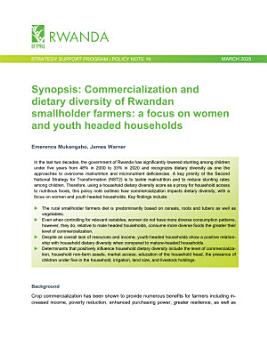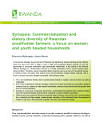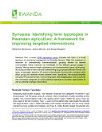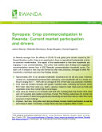Synopsis: Enhancing smallholder farmers’ profitability through increased crop commercialization in Rwanda
About this ebook
Furthermore, per hectare analysis reveals decreasing returns to scale for land size, disputing the notion that larger areas lead to efficiency gains. Instead, for example, smaller commercial farmers of less than 0.1 hectare, comprising 5.5 percent of our sample, sell over 50 percent of their crop value. Despite existing trends, this indicates that commercialization can take place on any size land holdings for relative income gains. Additionally, the study highlights the impact of factors like labor decisions and crop choice can significantly influence economic outcomes.
The findings suggest that smallholder farming remains economically viable in Rwanda, though market participation is somewhat limited. With appropriate support and risk mitigation, farmers of all land sizes can commercialize production, boost incomes, and enhance household welfare by reorienting towards higher-value market crops.








